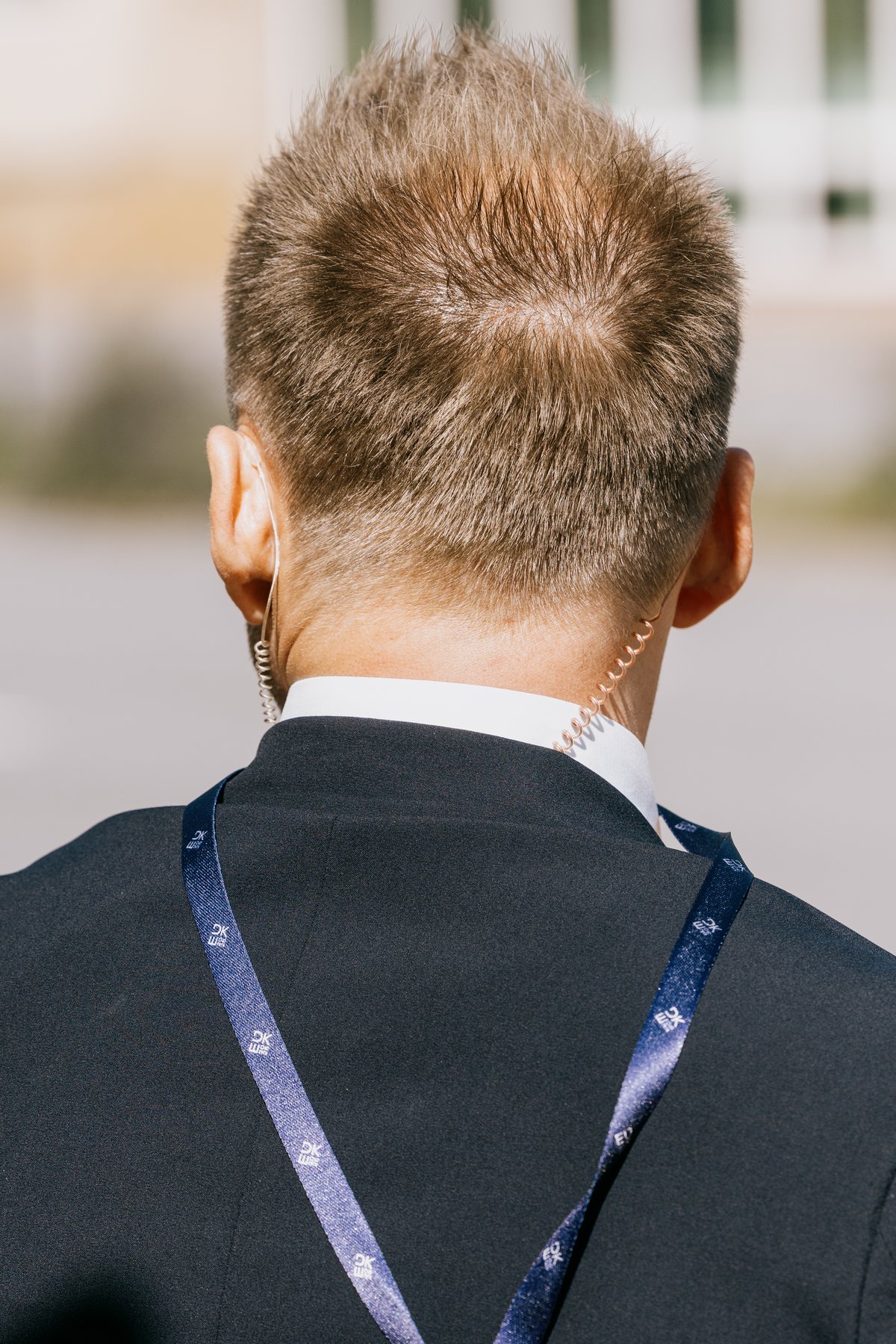“Spot on!”
It took an extraordinary effort from many AU staff members when the university hosted the opening of Denmark’s EU Council Presidency. Lone Jørgensen and Trine Graae Lundorf from AU’s events team had worked on the event for about a year, the university director acted as emergency chief, AU's caretakers had to hammer nails into a windblown red carpet, and AU’s photographer found himself in the shadow of the Prime Minister.

It's the next day at Aarhus University. The EU dust has settled at Aarhus University after it hosted part of the opening of Denmark’s EU Council Presidency the day before. The event required the closure of the airspace over Aarhus, cordoning off large parts of campus, and a heavy police presence, as the university hosted the European Commission – led by Commission President Ursula von der Leyen – along with the entire Danish government for several hours.
The day after the major event, Omnibus meets Lone Jørgensen, senior consultant and operations manager at Events and Communications Support, and Trine Graae Lundorf, division manager in the same unit. Both have been deeply involved in planning and executing the event ever since the Ministry of Foreign Affairs reached out to AU around this time last year to assess whether the university could host an event of this scale.
Both are relieved after what they describe as an event that followed the very detailed minute-by-minute schedule – with the exception of a rogue red carpet and a missing stack of plates.
“I feel a sense of relief and pride in what this place can achieve in terms of collaboration – and awe at what these yellow bricks can contain. The Main Hall looked as if it had been purpose-built for a plenary session,” Trine Graae Lundorf says.
“Yes, it was spot on,” Lone Jørgensen adds.
“We always say it’s a success when we’re invisible. And the things that didn’t go according to plan were easy to fix.”
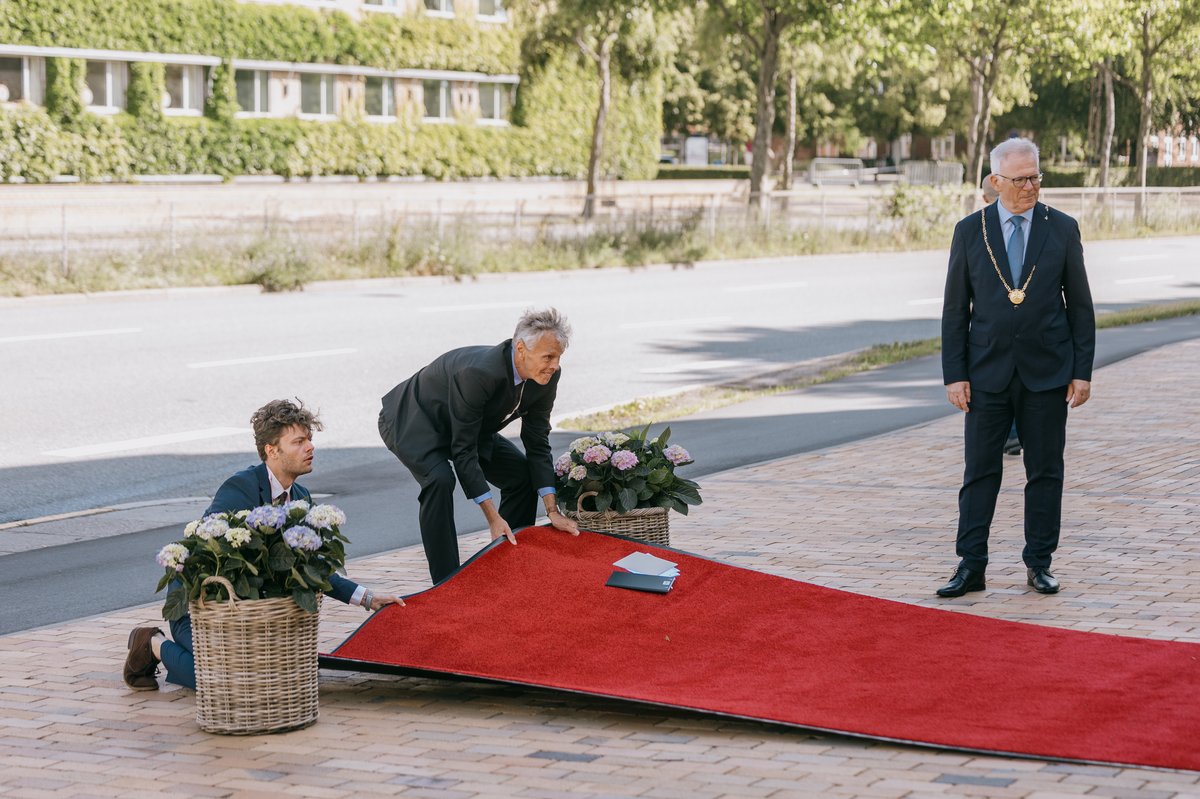
The biggest event ever at AU
For Lone Jørgensen, who has worked in AU’s events department since 2011, this was undoubtedly the biggest event she has ever helped deliver – despite having worked on major events featuring royals, top politicians and leading researchers from home and abroad.
“I’ve never handled such a complex task, with so many internal and external partners, such high visibility and such a high level of security that we had to close the airspace above the city,” she says.
The Ministry also had high expectations for what the university needed to provide in order to host the political part of the presidency opening, Lone Jørgensen explains:
“In addition to a plenary hall, we had to accommodate a press conference, a media centre for domestic and international journalists, workspaces for the politicians, prep rooms, and meeting rooms for four cluster meetings between ministers and commissioners. The infrastructure between venues and the technical setups at all premises had to be spot on.”
Trine Graae Lundorf has no doubt that the facilities AU could offer played a key role in Aarhus being chosen as host city for the opening ceremony.
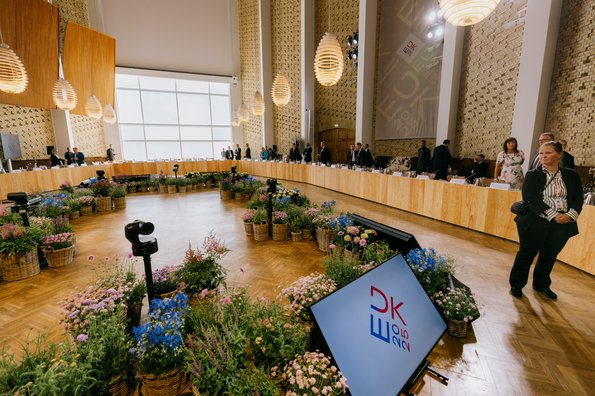
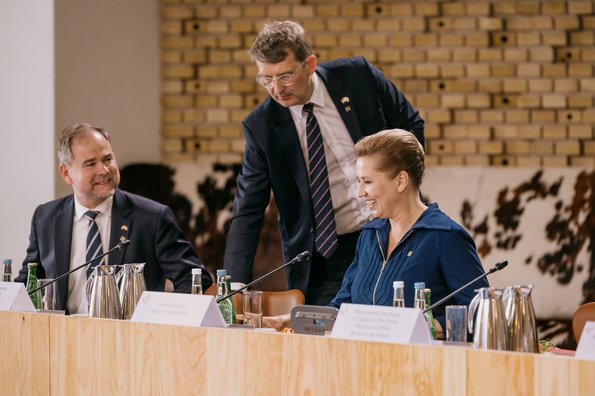
University Director: AU brought ethos to the event
University Director Kristian Thorn was present throughout the event in his role as the university’s chief emergency coordinator, ready to activate the crisis response team if needed. Thankfully, it wasn’t. The university director experienced an event where everything went exactly according to the script:
“It was the result of thorough planning and brilliant execution – not least on the part of AU staff. With an event of this magnitude, there’s always a risk something might go wrong. But we presented a campus more beautiful than ever and a team that had full control of even the smallest details,” Kristian Thorn says, also highlighting the collaboration with the ministry.
According to Kristian Thorn, it’s a unique opportunity for AU to showcase its campus in connection with an event such as the opening of the Danish EU presidency.
“It’s fantastic that the government chose Aarhus University as the venue for the academic, substantive part of the programme,” he says, and offers his view on why AU was selected:
“Besides offering beautiful surroundings, the place radiates seriousness, democracy and dialogue and is, at its core, grounded in knowledge and facts. That’s the ethos we bring to the event and to the important conversations that took place here.”
High level of security
All staff present during the event had been vetted by the Danish Security and Intelligence Service (PET).
“We also had security-cleared backups for every function who could step in in case of illness,” Lone Jørgensen says.
As early as Wednesday, the police sealed off the north-eastern part of campus, including the Rector’s Office, Stakladen and the Student House. Staff and students in the area had to work from home on Wednesday and Thursday. No unauthorised persons were allowed in the buildings, which were thoroughly searched with sniffer dogs.
“Even catering staff had to submit their full names and vehicle registration numbers to the police. And they had to arrive precisely at the agreed time – not two minutes later,” Lone Jørgensen says.
The team also operated with a “sunny weather plan” and a “rainy weather plan” – two alternative event plans depending on the forecast.
“It wasn’t until Thursday morning that we made the final decision together with the ministry,” she explains.
Hash from the Home Guard kitchen
At AU BSS Building Operations in the north-east corner of campus, there’s also a “day after” mood as caretakers gather for lunch. Today’s meal consists of leftovers – not from a royal banquet, but from the Danish Home Guard, which assisted police with security barriers. The hash, according to AU’s caretakers and technicians, wasn’t half bad.
Caretakers and technicians played a major role in preparing the campus for the event, ensuring everything looked its absolute best. They also handed over keys and access codes to the police, who even removed manhole covers as part of their checks. They set up countless tables and chairs and raised the Danish and EU flags side by side in front of the Main Hall and the Ambulatory. During the event itself, they were on standby in case they were needed – and they were, when a few nails had to be hammered into the red carpet to keep it from blowing away.
They, too, were security-vetted and passed through scanners at the entrance to Stakladen – as did the thermos flasks used during the event.
Packed in like sardines in the press pool
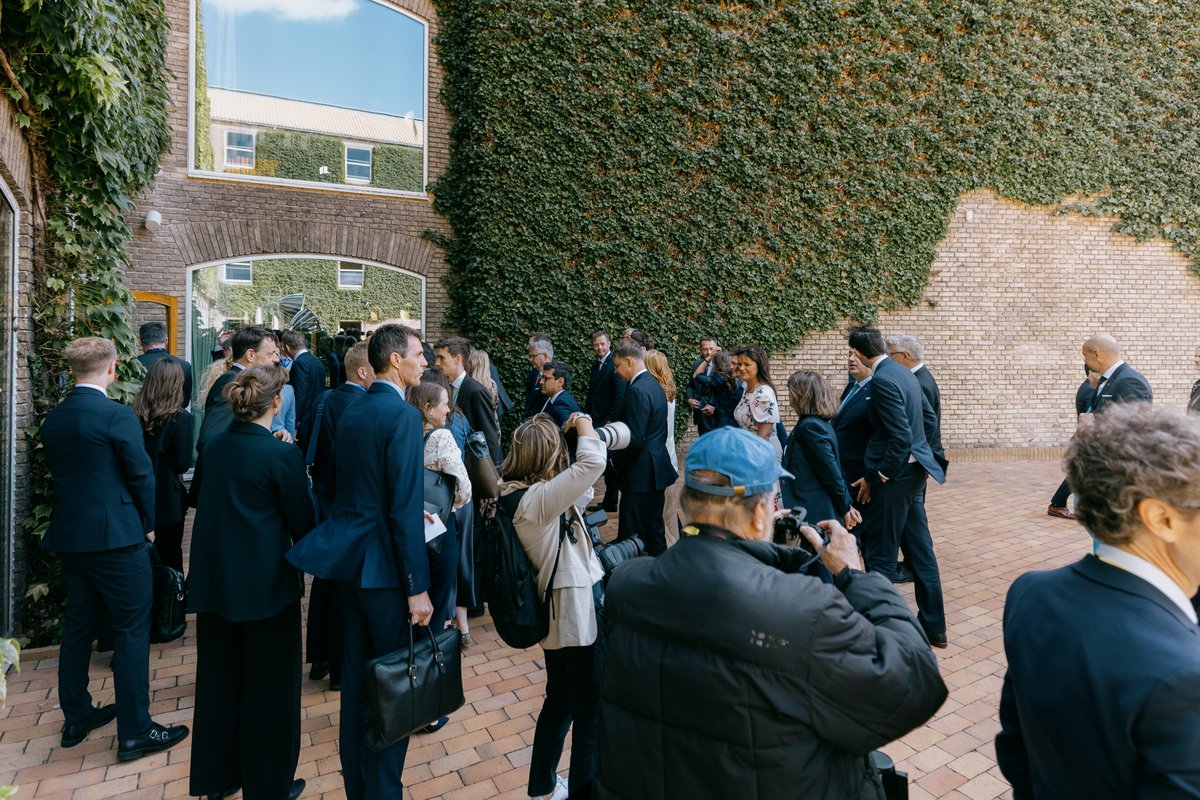
AU’s photographer Jens Hartmann was also on duty during the event. With his background as a press photographer, he’s covered major events like this before – and says it’s always exciting to see what kinds of photos you get the chance to take on a day like that.
“Everything is controlled – where you’re allowed to stand and move – and you’re shoulder to shoulder with other skilled photographers in a confined space, trying not to take the same pictures as everyone else. The trick is to get the most out of those tight constraints – and that went quite well,” he says.
“Except for that one moment when Mette Frederiksen accidentally blocked the view of Brian Bech Nielsen while welcoming von der Leyen.”
He particularly enjoys photos that go behind the polished facade and capture quieter moments of reflection – for instance, two ministers in conversation. But that’s hard to get at an event like this. He did, however, manage to capture a moment where Ursula von der Leyen and Mette Frederiksen shared a coffee and a quiet chat in the Ambulatory after the welcome and photos in the Sun Courtyard.
“That’s probably my favourite shot from the day,” Jens Hartmann says.
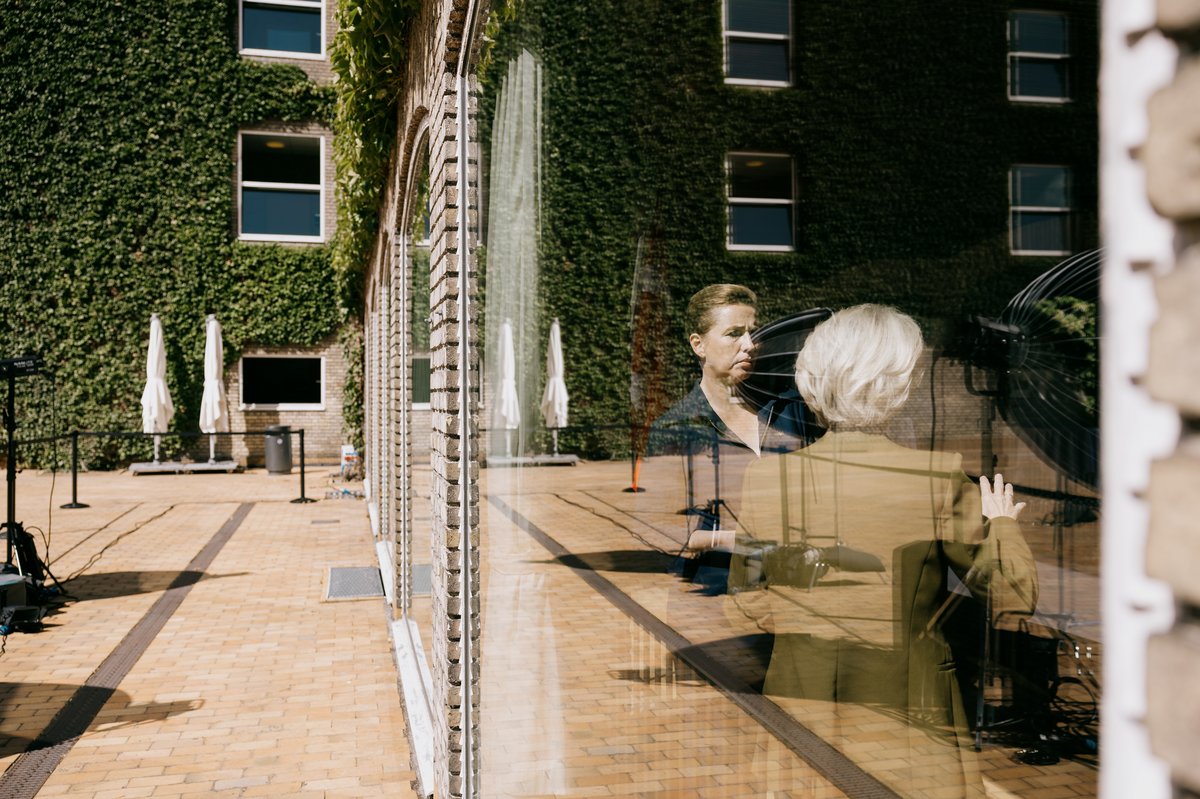
A Herculean effort
Lone Jørgensen and Trine Graae Lundorf also expanded their internal network during the planning – for instance, AU IT had to step in and set up four brand-new, highly secure Wi-Fi hotspots for the top-level guests.
“Even though we’re a large organisation where everyone’s busy, no one said no. Everyone pitched in, tackled their tasks with pride, and did their very best,” Lone Jørgensen says.
Trine Graae Lundorf adds:
“Yes – I’ve thought to myself more than once: damn, what a capable organisation!”
It’s also been an educational experience seeing how both the police and the ministerial teams operate. Several insights will be carried forward in AU’s future events planning:
“Like using earpieces and walkie-talkies during execution – that way, everyone stays in the loop and gets the same instructions. It was incredibly effective,” Lone Jørgensen says.
She also feels a kind of emptiness now that the event is over, she says.
“It’s a kind of post-event blues. These past weeks – months, really – have been so intense, with calls and emails from early morning till late at night. Now everything’s quiet. No deadlines. Nothing urgent,” she says.
Still, it’ll be fine if it takes a while before an event of this magnitude comes around again.
“It’s been a Herculean effort, and it coincided with a year full of other major events. This spring alone, we held awards ceremonies, MatchPoints, Denmark's Political Festival on Bornholm – and come September, we’ll be hosting the annual celebration,” Lone Jørgensen says.
The Ministry of Foreign Affairs covered all direct costs associated with the event at Aarhus University, while AU contributed in-kind by providing staff and facilities.
This text is machine translated and post-edited by Cecillia Jensen


